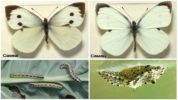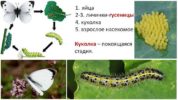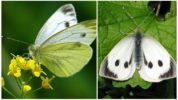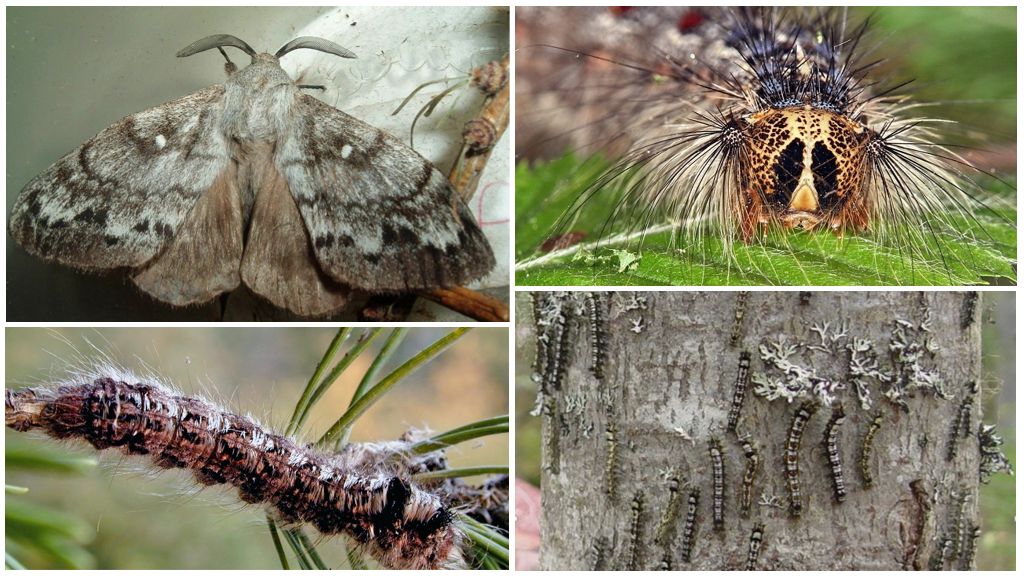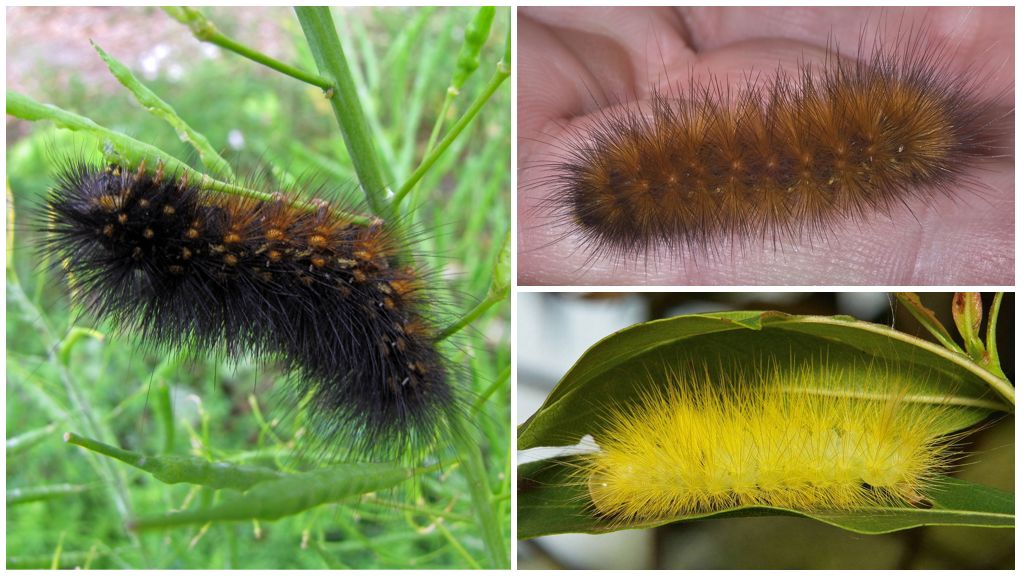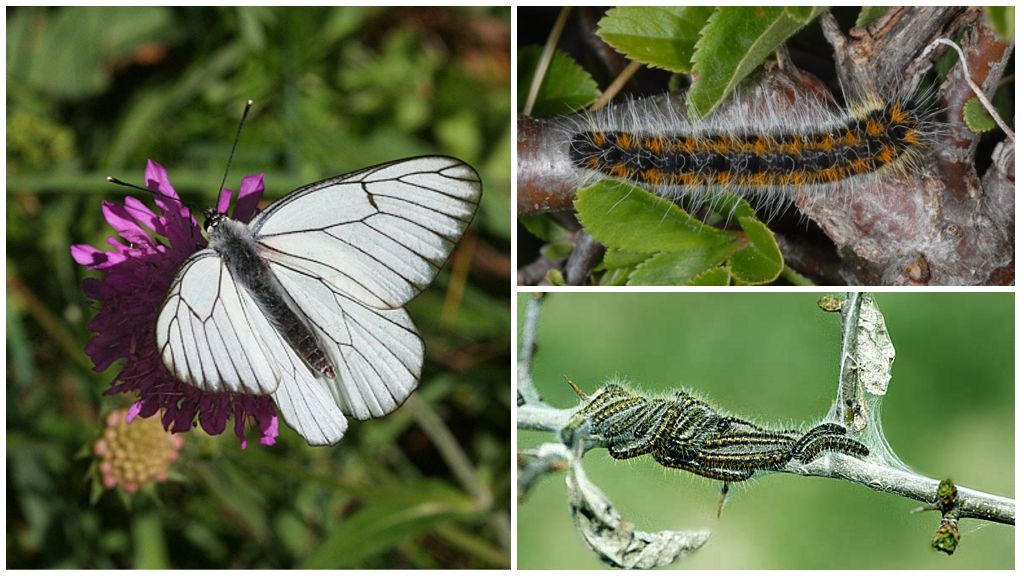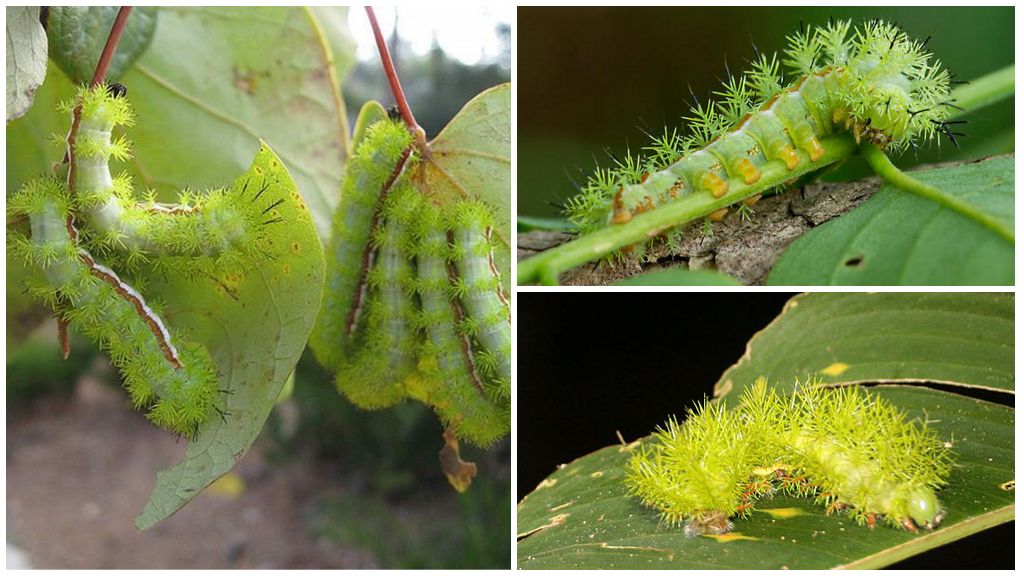- Female and male cabbage
- Cabbage Butterfly Development Cycle
- Butterfly cabbage
Cabbage butterfly is a daily representative of the order Lepidoptera class of insects. Its other name - the whitish symbolizes its color: white wings with small black dots in the center. Belyanok can be seen already in spring in April or May fluttering over the first green plants.
Interesting!
Some Lepidoptera lovers breed butterflies in their home aquariums. How many butterflies of cabbage live in an artificial environment depends on care. At home they eat the same plants as in nature.
But the butterfly cabbage gained fame not because of its early appearance. It is a dangerous pest of vegetable gardens and vegetable plantations. Her larvae are capable of damaging most of the plantings of vegetables during the season, although this is not the only what do caterpillars eat. Cabbage beds are especially affected by the invasion of caterpillars. This explains why the insect was so named.
Appearance
Common cabbage in its life cycle passes through several stages of development. The adult butterfly is called an imago. It has a small elongated body, a distinct head with eyes located on it, a mouthpart, and long antennae. A stable position of balance helps her to keep 3 pairs of legs.
Cabbage insect is adorned with large wings of milk or white color with a noticeable darkening along the edge. The upper wing of females has a dark upper corner and two black spots in the middle. The upper edge of the lower winglet is decorated with one spot. The lower wings of the female have a yellow tint.
On a note!
The description of the cabbage butterfly is very similar to the appearance of another representative of the white whale family - the replica. This butterfly also has white wings with black dots, but in size it is inferior to cabbage pest.
Males have almost snow-white wings with the same darkened corner. A speck is present only on the lower wings in the same place as in females. The wingspan of both sexes is 50-60 mm. The photos of the butterfly cabbage demonstrate the external differences and help determine the sex of the insect.
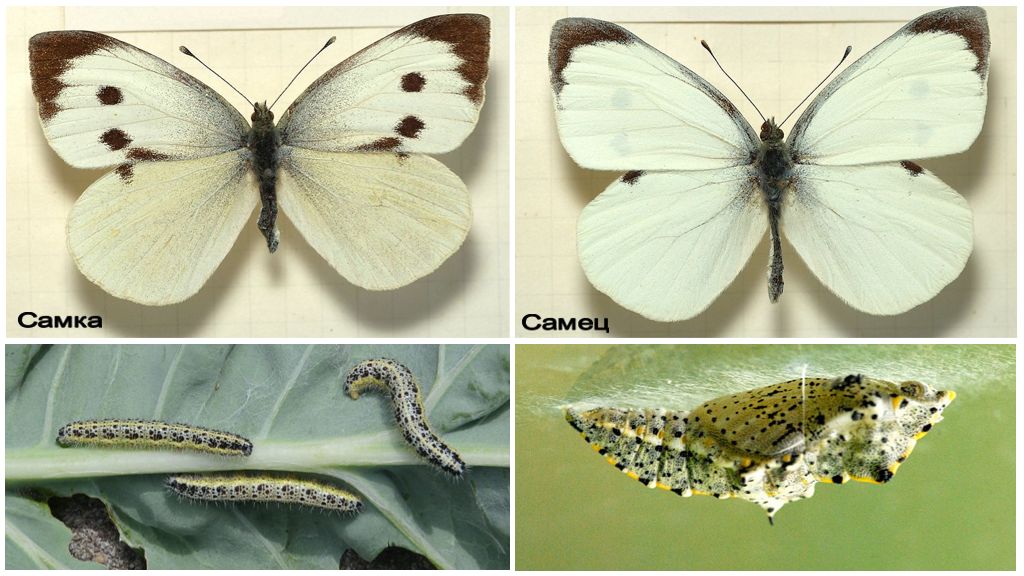
Reproduction and development of all stages
The mating period falls on the first warm days of spring. For laying eggs, the female chooses cruciferous weeds. These include:
- shepherd’s bag;
- colza;
- overbig;
- hiccup;
- wajda tinting.
White butterfly cabbage makes egg laying on the back of the leaf. During its short life, one female is able to lay 200-300 eggs. The average lifespan of a whitefish in the adult stage is one month. After 7-10 days, bright yellow larvae appear from the masonry - the second stage of development of the insect. The length of the caterpillars is 3-4 cm. They actively eat the leaves of plants and increase in size.
Every 5-7 days, the caterpillar of the cabbage butterfly molts. During its lifetime, the larva undergoes 4 molting. As it develops, it changes color to bright green with a blue tint. In the photo of the cabbage caterpillars, yellow and black dots are visible on the sides of the body. At the final stage, the caterpillar crawls away from the feed plant in search of a secluded place for pupation. So many do types of caterpillars.
If the pupation process occurs in the warm season, then after a couple of weeks a new butterfly appears from the pupa. Under favorable conditions, up to 4 generations of cabbage appear in the southern regions during the season. Pupa can be seen attached on wooden fences, sheds, trunks of large plants.
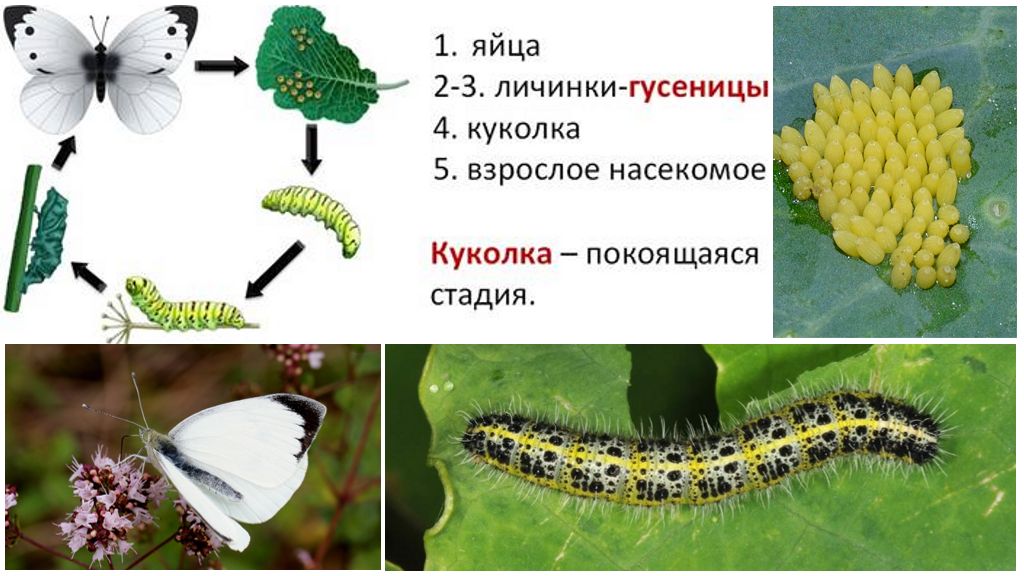
On a note!
The yellow-green chrysalis pupa does not turn into an adult at the end of summer. The life processes of the pupa go into diapause, and it remains to wait for spring in this state. And with the first warm spring days, the transformation resumes and a butterfly appears from the cocoon.
Nutrition of larvae and adults
The second and third generation of insects become a real disaster for gardeners and gardeners. The first month of summer is the most favorable for breeding of the cabbage butterfly. Favorite insect feed crops appear in the garden:
- cabbage;
- radish;
- turnip;
- horseradish;
- turnip;
- radish;
- garlic;
- capers.
Clutches of eggs most often leave a pest on the back of the leaves of these vegetables. Emerging caterpillars begin to actively feed on juicy young leaves. First, they eat the outside, then go to the central part. Damaging the leaves of vegetable crops, caterpillars disrupt photosynthesis in the plant, thereby causing irreparable damage to the future crop.
On a note!
When the larvae eat the leaves of cabbage to the base, they pass to the internal leaves of the head of cabbage. This leads to the destruction of the entire plant.
An adult individual does not damage vegetation. Cabbage butterflies eat nectar and wild pollen:
- dandelion;
- chamomile;
- alfalfa;
- mother and stepmother;
- Sivets meadow.
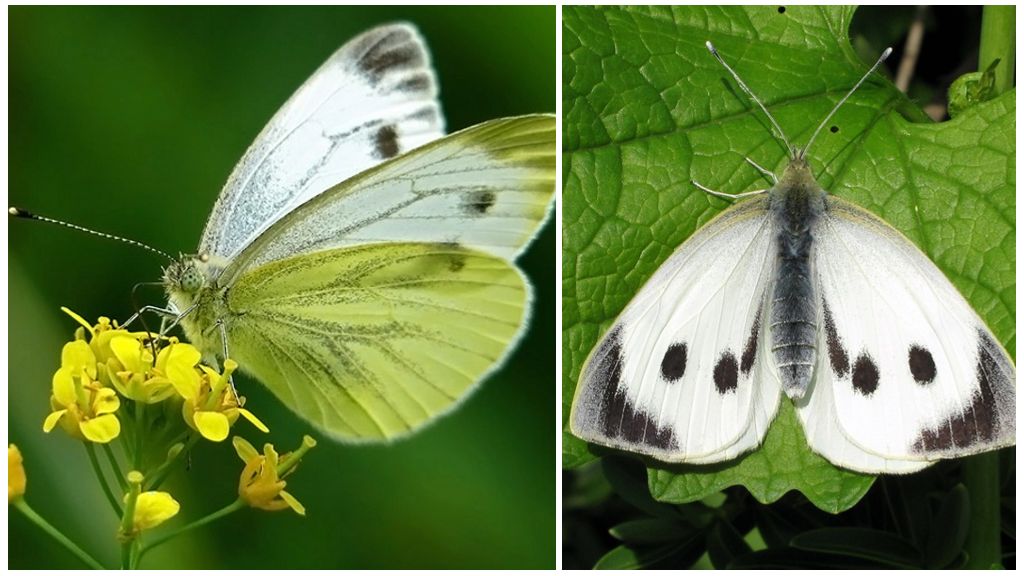
The life span of an adult butterfly depends on weather conditions. Optimal for her are warm, dry, windless days with an average temperature of 20-25 degrees Celsius. This explains why many cabbage butterflies can be seen on vegetable plantations in the southern regions.
Interesting!
Cabbage women are by no means the couch potatoes they think they are. Entomologists have repeatedly observed the massive migrations of butterflies. It is noticed that from the southern regions they fly north in the summer. They move along a clearly marked route and even obstacles will not force them to deviate from the chosen direction. In calm weather, the speed of the cabbage varies in the range of 7-14 km per hour. In the presence of wind, butterflies can overcome up to 36 km per hour.
Cabbage butterfly: harm or benefit
The beauty of the insect can not be compared with the consequences that lead to the gluttony of caterpillars of cabbage. With each new generation, it damages entire plantations of vegetables. People have learned fight the cabbage at different stages of its development.
Pest control consists in spraying crops at an early stage after transplanting seedlings into the ground. For processing vegetables, special tools have been developed that can be purchased at the store. Gardeners also use folk remedies for cabbage.
Interesting!
In addition to cabbage caterpillars, cabbage leaf beetles are also pests of cabbage beds. Their larvae and adults actively destroy the foliage of garden plantings.
An adult butterfly can be beneficial in nature. Fluttering from flower to flower in search of food, she carries pollen on her legs. In this way, it pollinates many plants.
